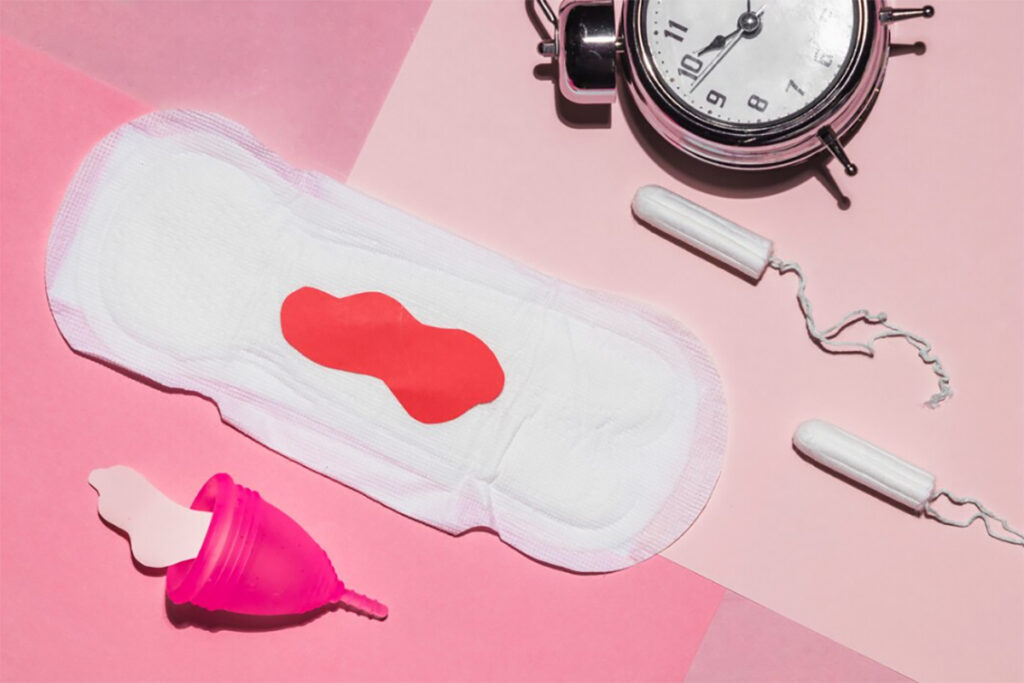
Introduction
Menstrual cramps without the onset of a period can be a confusing and sometimes distressing condition for many. Understanding the nature of these cramps, their potential causes, and how to effectively treat them is essential for those affected. This comprehensive guide aims to explore the phenomenon of having menstrual cramps but no period, shedding light on the possible underlying reasons and offering medical advice for management and relief.
By exploring everything from the role of the pelvic floor in menstrual cramps to the impact of lifestyle changes and medical treatments, we hope to provide valuable insights and solutions for those experiencing this condition.
Understanding Menstrual Cramps Without Period
What are Menstrual Cramps?
Menstrual cramps, medically known as dysmenorrhea, are throbbing or painful cramping in the lower abdomen experienced by many women during their menstrual cycle. According to a statistic, 31.31 million women in the U.S. reported menstrual/period pain or pre-menstrual syndrome (PMS) in 2020, highlighting the prevalence of this discomfort. These cramps occur when the uterus contracts to shed its lining, a process aided by the hormone-like substances called prostaglandins.
While menstrual cramps are commonly associated with the period itself, experiencing cramps without a period can raise questions and concerns. It’s crucial to differentiate these cramps from other types of abdominal pain, as their occurrence without a period could signal various health conditions or physiological changes in the body.
Myths and Misconceptions about Menstrual Cramps
There are numerous myths and misconceptions surrounding menstrual cramps, one of the most common being that they always accompany menstruation. However, cramps can occur for reasons unrelated to the menstrual cycle, such as early pregnancy or underlying medical conditions. Another widespread belief is that severe cramps are a normal part of menstruation when, in fact, they can be indicative of conditions like endometriosis or pelvic inflammatory disease. Understanding these misconceptions is important for recognizing when menstrual cramps but no period warrants further investigation and care.
Role of Pelvic Floor in Menstrual Cramps
The pelvic floor, a set of muscles supporting the pelvic organs, plays a significant role in menstrual cramps. These muscles can contract and cause severe pain, similar to menstrual cramps when they are tense or dysfunctional. Pelvic floor dysfunction can lead to common symptoms that mimic menstrual cramps, even in the absence of menstruation.
Cramps without Menstruation Explained
Experiencing cramps without menstruation is a condition that puzzles many. According to a study, menstrual abnormalities affect between 14% to 25% of women of reproductive age. This phenomenon can be attributed to various factors, including hormonal fluctuations, pelvic floor dysfunction, or the early stages of pregnancy. It’s important to understand that these cramps are not a standalone condition but a symptom that can be linked to several underlying causes. Recognizing when cramps deviate from the normal menstrual cycle pattern is crucial for seeking appropriate treatment and understanding the body’s signals.
Possible Reasons for Experiencing Cramps without Menstruation
Pregnancy
One common reason for experiencing menstrual-like cramps without a period is early pregnancy. During the early stages, pregnant women may notice implantation of the embryo, causing mild cramping and spotting, often mistaken for menstrual discomfort. These cramps are typically lighter and shorter than menstrual cramps and are a normal part of early pregnancy for many women. However, because they closely mimic menstrual cramps, they can lead to confusion without the presence of menstruation.
Medical Conditions like PCOS
Polycystic Ovary Syndrome (PCOS) is a hormonal disorder that can cause irregular menstrual cycles, leading to periods of having menstrual cramps but no period. PCOS affects the ovaries’ ability to release eggs properly, resulting in cyst formation and hormonal imbalances. These imbalances can cause pelvic pain similar to menstrual cramps, even when there is no menstruation. Understanding the link between PCOS and menstrual-like cramps is crucial for those affected by this condition.
Emotional Stress
Emotional stress can have a profound impact on the body, including the menstrual cycle. Stress can lead to hormonal imbalances that might cause the body to experience menstrual-like cramps without the actual period. The body’s response to stress can mimic the physiological processes involved in menstruation, leading to abdominal cramping but no period. Addressing emotional stress is an important aspect of managing and treating these types of cramps.
Pelvic Floor Dysfunction
As mentioned earlier, pelvic floor dysfunction can lead to symptoms that resemble menstrual cramps. This condition involves a lack of coordination in the pelvic floor muscles, leading to period pain, including cramps without menstruation. Pelvic floor dysfunction can be triggered by various factors, including injury, surgery, or childbirth.
Other Specified Risk Factors
Other Specified Risk Factors Several other risk factors can lead to experiencing cramps without menstruation. These include endometriosis, where tissue similar to the lining of the uterus grows outside of it, causing period-like pain, cramping, painful sex, and painful bowel movements. Intrauterine devices (IUDs) for birth control can also cause abdominal cramps as the body adjusts to the foreign object.
Additionally, certain lifestyle factors, such as lack of exercise or poor diet, can contribute to the occurrence of cramps without a period. Moreover, digestive conditions like irritable bowel syndrome (IBS), characterized by chronic abdominal pain, feeling of fullness, and irregular bowel habits, can also mimic menstrual cramps or painful periods, further complicating the diagnosis for those experiencing pelvic discomfort without menstruation.
Furthermore, digestive issues like Inflammatory Bowel Disease (IBD), which encompasses conditions such as ulcerative colitis and Crohn’s disease, can indirectly cause cramping through inflammation and discomfort in the abdomen or digestive tract, which may be mistaken for menstrual cramps. Identifying and addressing these risk factors is key to managing and preventing such cramps.
Pelvic Floor and Menstrual Cramps

How Pelvic Floor Dysfunction Can Lead to Menstrual Cramps
Pelvic floor dysfunction’s role in causing menstrual-like cramps without a period cannot be overstated. When the pelvic floor muscles are too tight, weak, or lack coordination, they can cause a range of symptoms, including sharp pain that mimics menstrual cramps. This dysfunction can disrupt the normal relaxation and contraction of the pelvic muscles, leading to chronic pelvic pain.
Treatment Options
Home Remedies & Lifestyle Changes
For those experiencing menstrual cramps but no period, several home remedies and lifestyle changes can offer relief. Regular physical activity, such as yoga or gentle stretching, can help reduce pelvic tension and cramping. Heat therapy, using a warm bath or a heating pad on the lower abdomen, can also ease muscle tension and pain. Additionally, managing stress through relaxation techniques like meditation or deep-breathing exercises can help alleviate cramps caused by emotional stress.
Medical Treatments
When home remedies are insufficient, medical treatments may be necessary to address the underlying causes of cramps without a period. Depending on the diagnosis, treatments can range from hormonal therapies to surgery for issues such as endometriosis. Consulting with a healthcare provider is crucial for determining the most appropriate treatment plan.
Over-the-counter Pain Relief
Over-the-counter pain medications, such as ibuprofen or naproxen, can provide temporary relief from menstrual-like cramps. These medications work by reducing the production of prostaglandins, thereby alleviating pain and inflammation. However, it’s important to use these medications as directed and consult a healthcare provider if an OTC pain reliever is regularly needed.
Hormonal Treatments
For certain conditions, such as PCOS or hormonal imbalances, hormonal treatments may be prescribed. Hormonal Birth control pills, patches, or vaginal rings can regulate menstrual cycles and reduce the occurrence of cramps without menstruation. These treatments work by controlling hormone levels, which can help stabilize the menstrual cycle and alleviate associated symptoms.
Pelvic Floor Physical Therapy
Pelvic floor physical therapy is a specialized treatment option for those with pelvic floor dysfunction contributing to menstrual cramps but no period. This therapy involves exercises and techniques to strengthen and relax the pelvic floor muscles, improving their function and reducing pain. For a comprehensive pelvic therapy overview, a trained pelvic floor physical therapist can tailor a treatment plan to address individual needs and symptoms, ensuring that each patient receives the most effective care for their specific condition.
Preventive Measures
Lifestyle Changes
Making lifestyle changes can significantly impact the prevention of menstrual cramping, even those occurring without a period. Regular physical activity can improve overall pelvic health and reduce the likelihood of cramps. Maintaining a healthy weight and avoiding smoking can also help prevent common conditions that may lead to menstrual-like cramps.
Dietary Recommendations
A balanced diet rich in omega-3 fatty acids, magnesium, and vitamin B1 can help reduce the severity of menstrual cramps. Incorporating foods like leafy greens, nuts, fish, and whole grains can support overall pelvic health. Additionally, reducing caffeine and salt intake around the menstrual cycle can help minimize bloating and cramping.
Pelvic Floor Exercises
Pelvic floor exercises, or Kegels, strengthen the pelvic floor muscles, which can help prevent dysfunction and reduce the risk of cramps without menstruation. Regularly performing these exercises can improve pelvic floor health, ensuring proper support for the pelvic organs and reducing the occurrence of pain. It’s important to learn proper techniques from a healthcare provider or pelvic floor physical therapist to ensure the exercises are effective.
Find Relief from Menstrual Cramps with WildHawk Physical Therapy
WildHawk Physical Therapy offers specialized treatment for those suffering from menstrual cramps without a period. Our team of experts is dedicated to providing comprehensive care, focusing on pelvic floor health and overall well-being. Through a personalized approach that includes pelvic floor physical therapy, lifestyle modifications, and dietary advice, we aim to address the root causes of menstrual-like cramps and offer long-lasting relief. Individuals can find support and solutions tailored to their unique needs by choosing pelvic floor therapy in Asheville, NC, ensuring a path to improved health and comfort.
Conclusion
Understanding and addressing menstrual cramps without a period is crucial for those affected by this condition. Through a comprehensive approach that includes recognizing the role of the pelvic floor, identifying potential underlying causes, and exploring various treatment options, individuals can find relief and resume their normal activities, improving their quality of life. It’s important to consult healthcare professionals for accurate diagnosis and treatment plans tailored to individual needs. With the right knowledge and support, managing and preventing menstrual-like cramps without menstruation is achievable.
FAQs
What type of cramps indicate pregnancy?
Cramps that occur in early pregnancy may be milder and less intense than typical menstrual cramps and are often accompanied by light spotting. These mild cramps are usually short-lived and can be felt in the lower abdomen or lower back. Recognizing these signs as potential indicators of pregnancy is important for timely prenatal care.
Does PCOS cause cramps?
Yes, PCOS can cause cramps without menstruation due to hormonal imbalances and irregular ovulation. These cramps may not follow a predictable pattern like menstrual cramps and can vary in intensity. Managing PCOS with lifestyle changes and medical treatment can help alleviate these symptoms.
How I knew I was pregnant before my missed period?
Early signs of pregnancy before a missed period can include mild cramping, spotting, breast tenderness, nausea, and increased fatigue. These symptoms of pregnancy can be subtle and vary from person to person. If you suspect you might be pregnant based on these common signs and additional symptoms, a pregnancy test and consultation with a health care provider can confirm your status.








